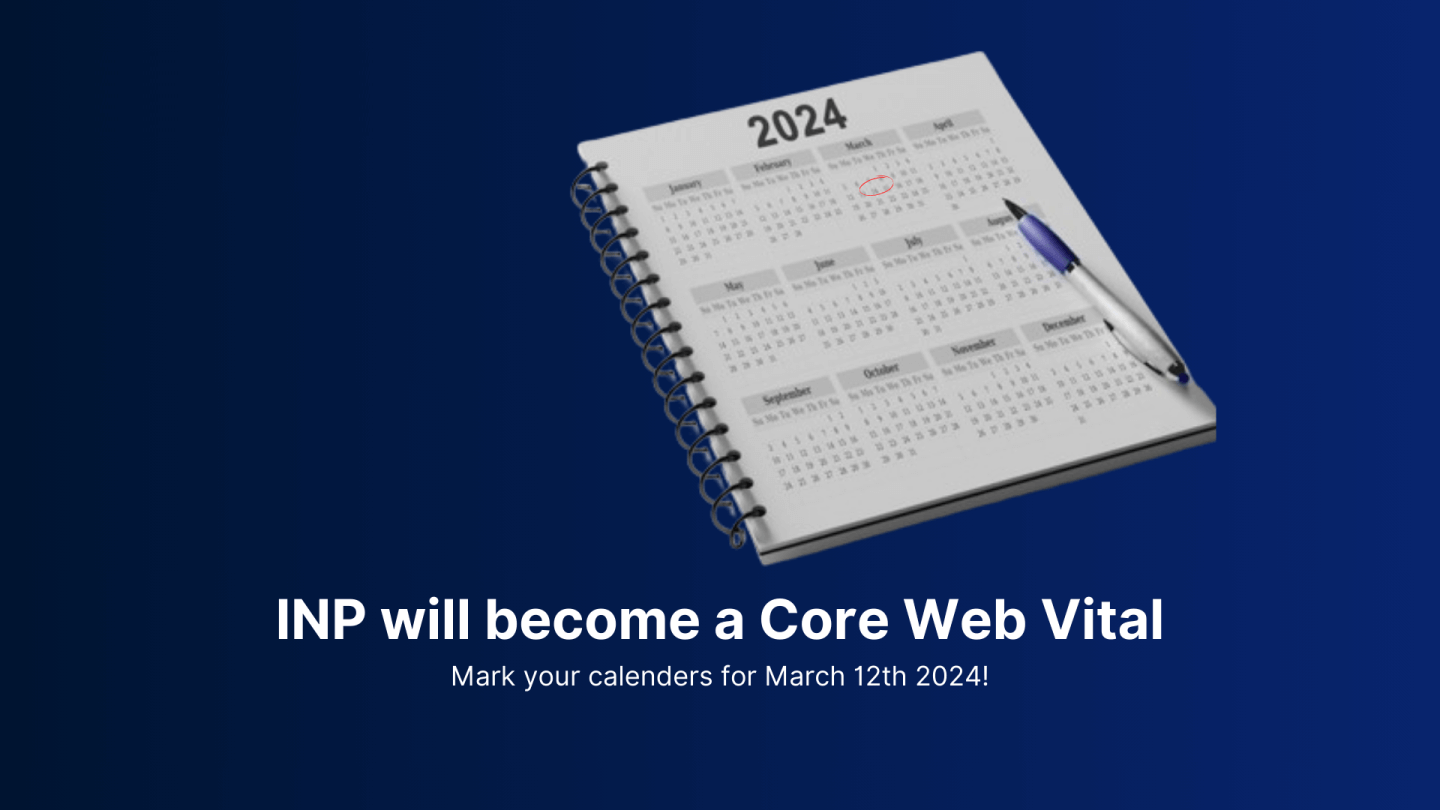The moment all performance -and maybe SEO- specialists have been waiting for has arrived: Google has announced the INP deadline!
The INP isn't new; performance specialists may have been working on improving the Interaction to Next Paint metric already. For instance, by using page speed monitoring tools like RUMvision.
An INP timeline
A timeline of the progress and introduction of INP is as following
- June 2021 - Exploration
The Chrome team started exploring a new metric - November 2021 - Feedback
The Chrome team asked for feedback - May 2022 - Experimental
Chrome announced experimental support for INP - May 2023 - Pending
Chrome is announcing that INP will become a Core Web Vital metric - March 2024 - Stable
INP becomes a stable Core Web Vital metric, replacing FID
The lifecycle of a new metric always goes through these last three stages. But up til today, the exact date was unknown. Google just announced the exact date though: March 12, 2024
INP replacing FID
This also means that the INP metric will replace FID, forcing FID to be removed from the set of Core Web Vitals.
It's not the first metric replacement. Even before Core Web Vitals, FMP was replaced by LCP, and while CLS had a major overhaul, it wasn't replaced or renamed.
Upcoming set of Core Web Vitals
But when it comes to Core Web Vitals, this now means that it will consist of the following metrics per March 12, 2024.
And with their 28-day rolling period in mind, you would want your INP metric to be in shape before the date of February 13th.
What you should do now
The intriguing aspect of the metrics introduced by Google is that they have been influencing user experience all along. Google has now introduced improved APIs and metrics to enable other stakeholders to gain a better understanding of these UX issues. But that doesn't mean the impact hasn't been there before.
With these metrics becoming part of Core Web Vitals, they will also begin to impact your SEO. So, if you haven't started improving your INP yet, the best day to begin is today.
Check your data
First, evaluate your overall historic progress to determine if your efforts have paid off. Then, delve into your Google Search Console to check for INP and other metric-related issues. Even if nothing appears, some pages may still be at risk.
Regardless of your situation, you can utilize RUM tools to collect data in bulk. For specific insights, I recommend using RUMvision, which offers detailed LoAF data and a third-party impact dashboard for each domain.
Go to (INP) events
I'm speaking at events to discuss pagespeed, Core Web Vitals, and monitoring. These public events are specifically covering INP.
Got an event coming up yourselves and would like to invite a Google Developer Expert to talk about pagespeed, Core Web Vitals or a specific metric? Don't hesitate to reach out!





